
Advisory No. 05: Places to Visit in Beijing
Beijing Travel Advice

The Forbidden City
The Forbidden City is a vast ancient architectural complex located in the centre of Beijing, covering an area of some 720,000 square metres – 961 metres in length and 753 metres in width. It is regarded as the finest example of traditional Chinese architecture.
Surrounded by a 5.2-metre-wide and 6-metre-deep moat and10-metre-high walls are 9,999 rooms. The walls have a gate on each side. There are unique and exquisitely structured watchtowers on each of the four corners of the walls. They offer views over both the palace and the outside. The Forbidden City is divided into two parts. In the southern section or the Outer Court, the emperor exercised his supreme power over the nation. The northern section or the Inner Court was the place where he lived with his royal family. Until 1924 when the last emperor of China was expelled from the Inner Court, 14 emperors of the Ming dynasty and 10 emperors of the Qing dynasty had reined in the palace. Having been the imperial palace for over five centuries, it houses numerous rare treasures and curios listed by UNESCO as a World Cultural Heritage Sitein 1987, the Forbidden City is now one of the most popular tourist attractions in the world.
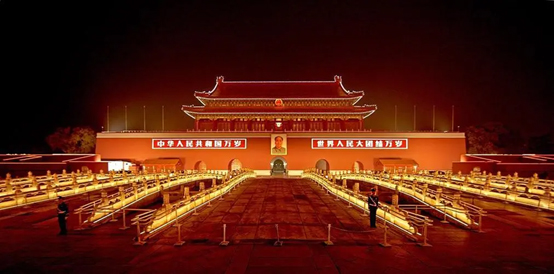
Tian’anmen Square
The Tian’anmen Square, the symbol of New China, is one of the largest squares in the world. The Tian’anmen Gate Tower stands imposingly at the northern end of the square. The red five-star flag flies high above in the sky and the Monument to the People’s Heroes is at the centre of the square. West of the square is the Great Hall of the People while east of the square is the National Museum of China. Chairman Mao Zedong Memorial Hall sits at the southern end of the square. Tens of thousands of visitors each day confirm the significance of the Tiananmen Square.
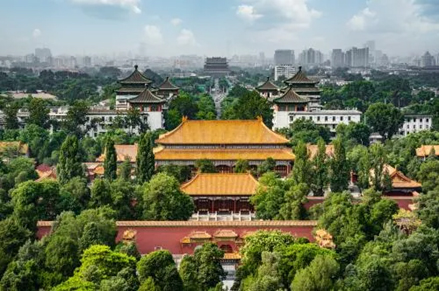
Jingshan Park
Jingshan Park is a park located in the center of Beijing, China, with a long history and profound cultural heritage. Originally built as a royal garden in the Yuan Dynasty, Jingshan Park later became an important leisure place for emperors during the Ming and Qing dynasties. There is a hill called “Jingshan” in the park, which is said to be formed by piling up soil during the excavation of the Forbidden City moat. Historically, this was one of the best viewpoints in Beijing, where emperors often overlooked their capital. The main attractions include Jingshan Hill, the Five Pavilions, and Wanchun Pavilion. The scenery here is picturesque, making it a great place for tourists to deeply experience traditional Chinese culture and enjoy the natural beauty. Whether you are a history lover or a tourist seeking tranquility, you can find your own pleasure here.
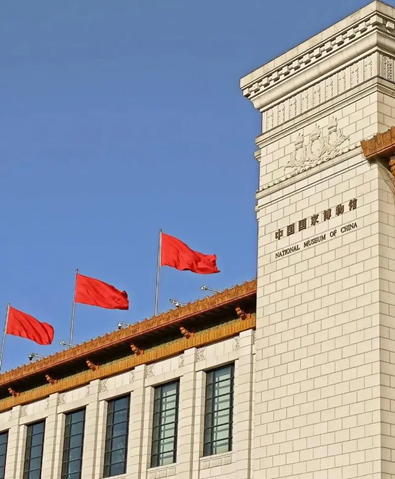
National Museum of China
The National Museum of China (NMC), located in Beijing, is one of the largest museums in the world, covering an area of over 191,000 square meters. The museum was created in 2003 from the merger of two prominent museums: the Museum of the Chinese Revolution and the National Museum of Chinese History. The museum was created in 2003 from the merger of two prominent museums: the Museum of the Chinese Revolution and the National Museum of Chinese History.
The museum offers various exhibitions, one of which is titled “The Age of Empires,” taking visitors through the different dynasties of China. This exhibition showcases the art, literature, and science of these eras.
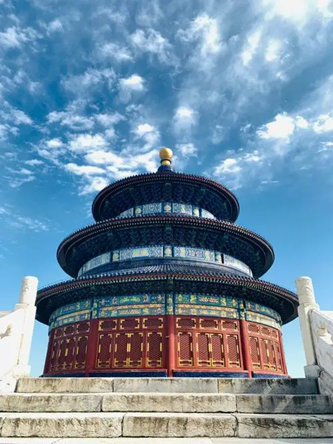
Temple of Heaven
The Temple of Heaven, a masterpiece of architecture and landscape design, is situated in the southern part of Beijing. It stands as the finest of all China’s temples. It was once the place where the Ming and Qing emperors worshipped the god of Heaven and prayed for good harvests. The symbolic layout and design of the Temple of Heaven had a profound influence on architecture in China over the centuries.
Two walls enclose the Temple of Heaven. The northern wall is semicircular while the southern wall is square, which reflects the ancient Chinese belief that Heaven is round and Earth is square. The northern grounds are higher than the southern part, signifying that Heaven is above Earth.
Two enclosing walls divide the temple into inner and outer sections.
The Circular Mound Altar and the Hall of Praver for Good Harvests lie at the southern and northern ends of the central axis of the inner section and are connected by the Sacred Way.
The Temple of Heaven is a cultural museum of offering sacrifices to Heaven, which merges architecture, aesthetics, acoustics, astronomy, calendar music and dance into an integral whole. It is an important window through which we can learn the history of China.
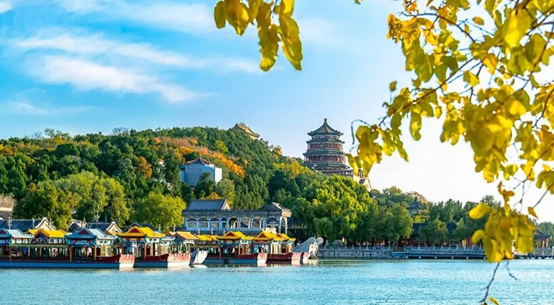
The Summer Palace
The Summer Palace lies about 15 kilometres northwest of Beijing. Covering an area of some 300 hectares, it is the largest imperial garden in the world. The initial construction of the Summer Palace began in 1750, commissioned by Emperor Qianlong as a gift for his mother on her birthday. The plundering by foreign troops in 1860 destroyed most of the buildings, but they were renovated in 1886 by Empress Dowager Cixi.
The Summer Palace consists primarily of the Longevity Hill and Kunming Lake. There are over 3,000 ancient structures, including pavilions, bridges, corridors, halls and palaces. It is a veritable museum of classical Chinese garden architecture.

The Great Wall
The first major wall was built during the reign of Emperor Qinshihuang in the third century BC. This wall was not constructed as a single endeavour but rather was created by the joining of several regional walls built by some states in the Warring States period. Today’s Great Wall of China, also known in China as the Great Wall of 10,000 li(1 li = 0.5 km), was built from the end of the 14th century until the beginning of the 17th century, during the Ming dynasty, in order to protect people from raids by northern tribes.
Today, the practical functions of the Great Wall as defense work no longer exist, but its beauty has remained up to now. The Great Wall snakes across China’s landscape like a huge sleeping dragon, rising and falling with the undulating (起伏) mountain ridges. The beauty of the Great Wall comes from its magnificence, firmness, grandeur and boldness. It is an expression of the pioneering spirit of the Chinese who pursue peace and dare to make progress, conveying deep national sentiment.
Therefore, the Great Wall is not only beautiful, but is a symbol of the character of the Chinese nation. It has never failed to stun visitors with its grandeur and splendour. In 1987, it was listed by UNESCO as a World Cultural Heritage Site.
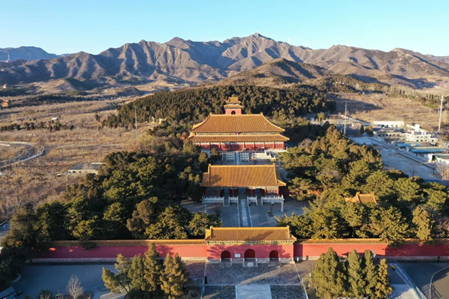
The Ming Tombs
The Ming Tombs are situated at the foot of the Heavenly Longevity Mountain in the northwest of Beijing. Among the 16 emperors in the Ming dynasty, 13 were buried in the area, along with 23 empresses, and many concubines, princes, princesses and maids, with all their tombs taking up over 40 square kilometres.
In the area, each tomb has its own independent unit. The layout and arrangement of all the 13 tombs are very similar, but they vary in size and complexity of their structures. Each tomb was built in an area at the foot of the mountain, with distances ranging from half a kilometre to eight kilometres between them. From site selection to design, great attention was paid to the harmony and unity with nature, so the tombs reflect the philosophy of “the unity of heaven and humanity”. As outstanding representatives of ancient Chinese tombs, the Ming Tombs demonstrate the richness of traditional Chinese culture.

798 Art Center
The 798 Art Center, also known as the 798 Art District, is located in Chaoyang District, Beijing, China, specifically at No.2 Jiuxianqiao Road, Jiuxianqiao, Chaoyang District. It has become a renowned contemporary art hub not just in China, but globally.
Originally built in the 1950s as a factory (798 Factory) with Soviet and East German assistance, the area was repurposed in the early 2000s. Due to its cheap rents and industrial aesthetic, the space attracted artists and galleries, transforming it into an art district.
The 798 Art Center is characterized by its modern art exhibitions, galleries, artist studios, and cultural events. It’s a melting pot of creativity, housing over 400 cultural institutions from various countries, making it a truly international art hub.

For more details contact AMIC Secretariat at info@amic.asia or visit us at https://www.amic.asia